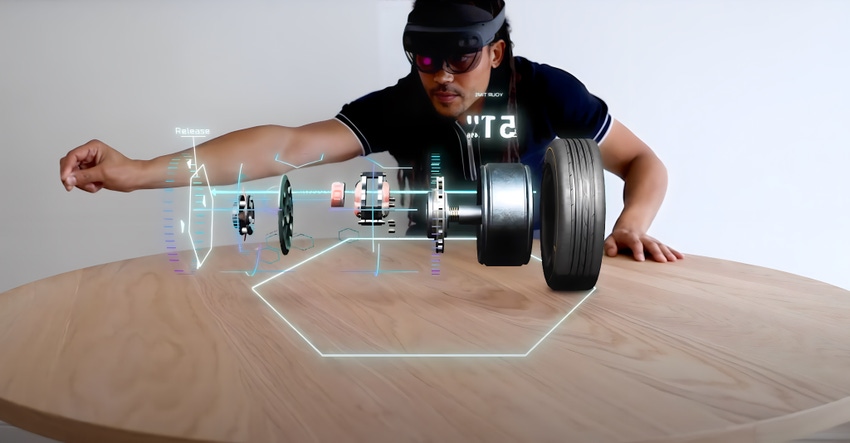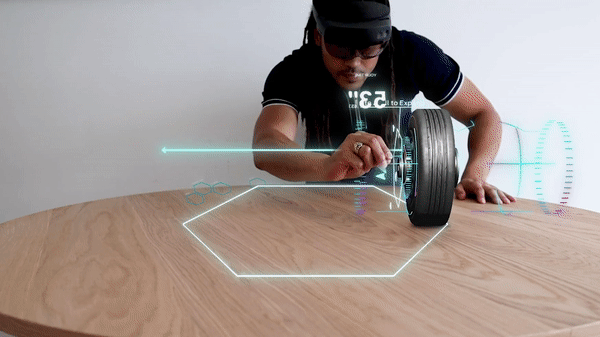Could Digital Twins Help Engineers Communicate Better?
Using interactive digital engineering communications could open doors to new opportunities.
December 1, 2023

At a Glance
- Digital engineering communications include digital twins, CGI, and virtual and augmented reality
- As subject matter experts, engineers can use digital communications to share the stories behind the engineering
The engineering industry is responsible for an abundance of things we often taken for granted: toothbrushes, cat’s eyes on the road, and jet engines, to name a few. At the time of their invention, these products were at the cutting edge of innovation. We’ve come a long way since then, and technological capabilities keep evolving—AI is the buzzword in the engineering world now.
Why then isn’t digital technology used to communicate advancements in the engineering sector in interactive and engaging ways? And why not tap into actual subject matter expertise to inform storytelling, rather than just relying on marketers? Engineers can provide essential technical insights and credibility that enhance the effectiveness and depth of communication around technology and innovation.
Graphics, Not Words
Static communications like PDFs, brochures, and other copy-heavy materials only go so far in describing technological leaps. Visual communications, like CGI or digital twin technology—where a virtual mock-up of the real-world scenario is created—add an extra dimension that demonstrates exactly how the technology works. Text-only materials can read like an academic paper; it may be dense and full of jargon, and hard for the reader to understand.
Part of the issue may be that the skill sets of people working in the engineering industry are very much focused on developing and producing the technology or equipment, relying on research and data to tell the story. That isn’t to denigrate those skills—they’re all vital. But, with an industry that communicates almost solely to other businesses instead of consumers, there can be a sense that there’s no need to change the way things have always been done. Budgets are focused on the actual production of the technology rather than how to communicate its benefits and showcase it.

HAPPY FINISH
Gamify Your Communications
It may sound like using CGI or AI to preview a new product would be a huge undertaking, but the bones are often already there. Computer-aided design (CAD) files likely already exist, so creating a digital twin of the real-word product could use those same files. The digital version can be built at the same time as the physical one. This also means the product can go to market before it’s physically complete, and potential service users will be able to see it in working order.
This is where there’s a crossover with game design. A lot of game-building engines are very flexible, meaning a product can be modified and changed in real time, rather than having to go through a lengthy rendering process with every adjustment. Animations can also be used to show hidden technologies and capabilities beneath the surface.
Digital, When Physical Isn’t Possible
Digital twins can also give potential customers an interactive experience, allowing them to engage with a product before they encounter it in real life. One example that comes to mind is a company that makes camera sensors for heavy mining equipment. They were particularly keen on creating animations and digital twins because it was far easier than trying to capture real footage of their product in the field, or, as in their case, down a mine.
The cameras give real-time feedback on how the mining equipment is functioning and predict when any components might need replacing, so they’re a really vital piece of equipment. Most of the mines are in remote and dangerous places, so it’s very difficult to get a film crew out there. A digital twin mirrors the camera's capabilities without having to navigate creating content creation down a mine that’s near impossible to access for people without training and safety clearance.
There’s also the cost-saving factor. Allowing potential clients to interact with the product digitally and provide feedback on its performance means less is spent on physical prototypes.
Functional, and Fun
Why not use virtual or augmented reality (AR and VR) to bring some fun to the function? Our work on Microsoft’s HoloLens 2 headset shows its capabilities—we designed and built an experience where users could configure a Ford GT40 racing car to the specifications of their choice. As well as having several color and wheel options, we also included the capability to ‘drive’ the car and look beneath its body at the engineering that made it a race winner. Users can even attempt to change the brake pads in under a minute, as the pit crew did at Le Mans in 1966.
There’s no reason that the same technology can’t be deployed to show the capabilities of other engineered equipment. It’s quick, interactive, effective, true to life—and a lot more fun than a press release. By utilizing digital technology to convey advancements, engineering businesses teams of all types can increase efficiencies and transform how they engage with stakeholders at the same time.
About the Author(s)
You May Also Like





